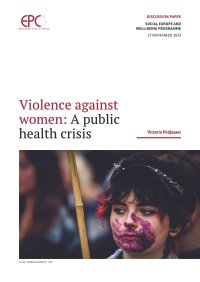By UN Women
The current survey arises as a joint initiative of the Observatory for Women's Equity (OEM) and the International Center for Private Enterprise (CIPE). The objective of this research is to characterize gender-based violence online, with a particular emphasis on businesswomen and/or female workers from companies registered in the chambers of commerce of Bogotá, Medellín, and Cali. The goal is to gain a deeper understanding of the nature and manifestations of gender-based violence in the digital environment, in order to propose policies that promote safe and equitable environments for all women in the business and labor sphere. The OEM is an initiative that emerged from the alliance between the WWB Colombia Foundation and the Universidad Icesi, with a mission to build, consolidate, and make visible projects that contribute to women's equity and inclusion. As a body for measurement, dissemination, institutional advocacy, and public policy, the Observatory focuses on analyzing factors that affect women's autonomy and equity in the Valle del Cauca region. Through systematic and timely measurement and analysis, it seeks to generate high-quality, accurate, and reliable information that contributes to regional and national debates on women's living conditions across various dimensions, promoting interventions in public policy and institutional programs that foster gender equity.
On the other hand, CIPE is one of the four core institutes of the National Endowment for Democracy (NED). Since 1983, CIPE has worked with business leaders, politicians, and journalists to build civic institutions that are vital for a democratic society. CIPE addresses fundamental issues for democracy and economic development, including women's participation in the business and labor sphere. Its commitment to promoting gender equity, framed within the work carried out by its Center for Women's Economic Empowerment (CWEE), makes it a strategic ally to conduct this survey on gender-based violence in the digital environment, with the purpose of shedding light on and combating the violence that affects women in the business and labor context. Both organizations, aware of the importance of addressing gender issues comprehensively and cross-cutting, have joined forces to carry out this survey to achieve a greater understanding of gender-based violence online. The alliance seeks to generate accurate and reliable data that reflect the experiences and perceptions of businesswomen and female workers in the digital environment, in order to propose strategies and policies that promote equal opportunities and the eradication of gender violence. The collaboration between OEM and CIPE represents a joint effort to promote workplaces and business environments free from violence and discrimination, where women can fully thrive, exercise their rights, and contribute to the economic and social development of their communities.
New York: UN Women, 2023. 48p.







